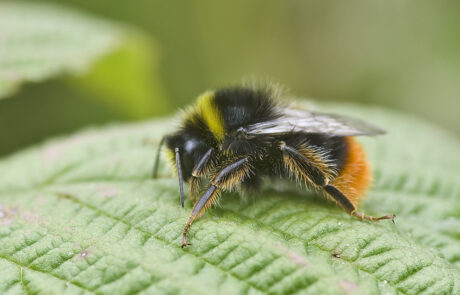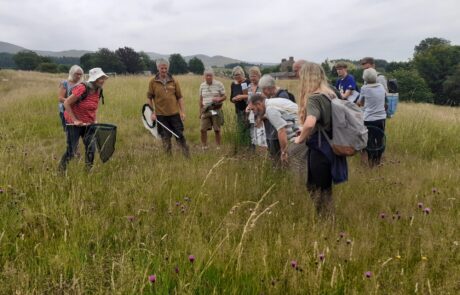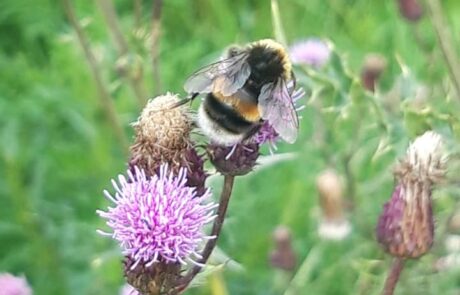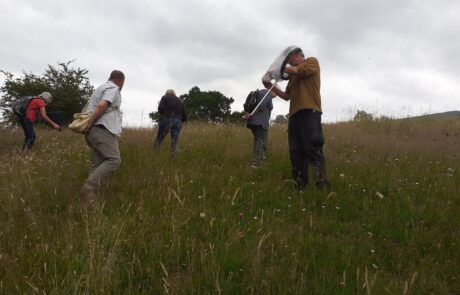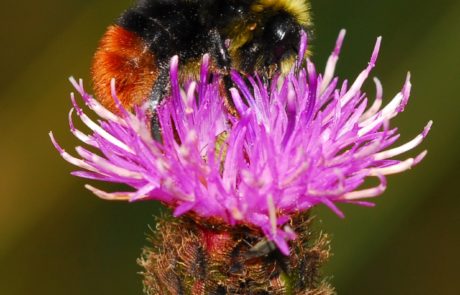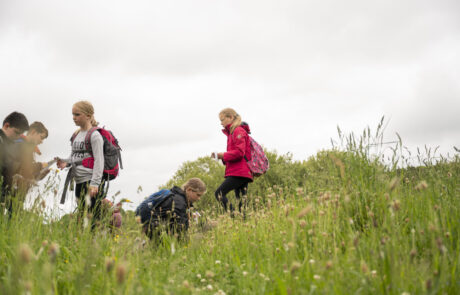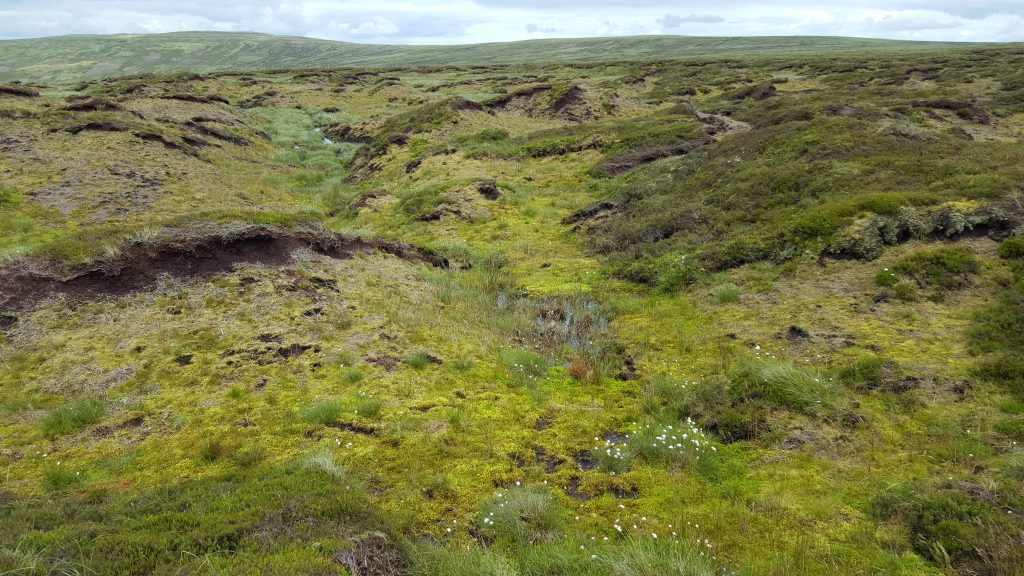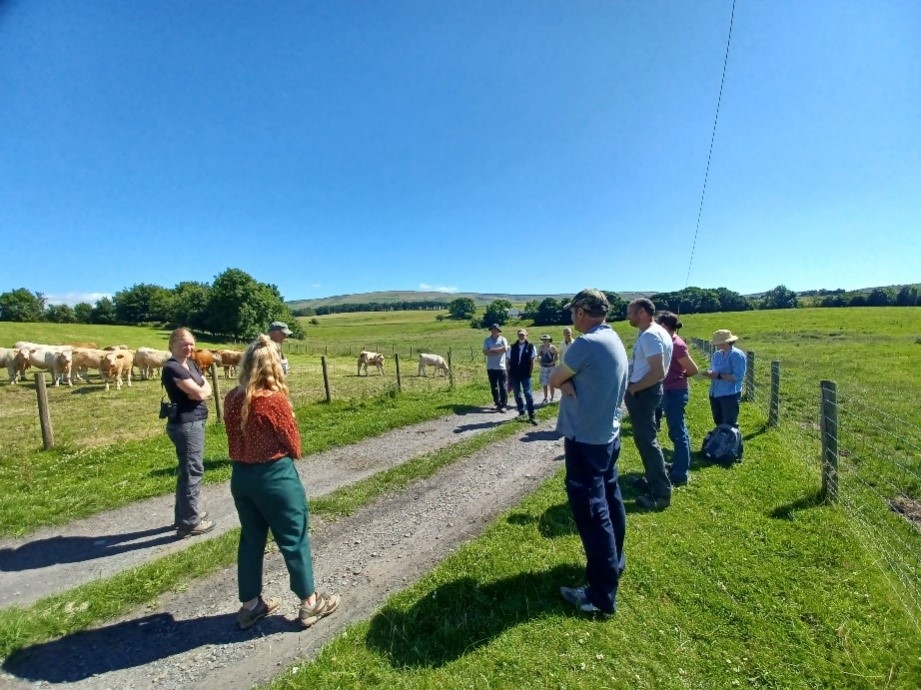What we do
Bumblebee identification
In July 2022, fourteen people gathered at Kirkoswald allotments to learn about bumblebee identification in the field with naturalist Stephen Hewitt, following an earlier online webinar in April.
Kirkoswald allotments was the perfect place in the Fellfoot Forward LPS for such an event due to the extensive restoration work Kirkoswald Environmental Group have done to create a large wildlife pond and community orchard, with many flowering plants to attract all sorts of pollinators, including the bumblebees.
The aim of the event was to provide people with identification skills to increase their confidence in naming and recording wildlife as well as helping contribute positively to awareness and conservation across the Fellfoot Forward scheme area.
Participants learned how to tell male and female Bumblebees apart, and what characteristics to look for in order to identify to species level using a key. At least five different species of bumblebee were identified and the group also saw a few hoverflies, including the bee mimicking Drone Fly and the Marmalade Hoverfly, whose larvae feed on greenfly.
Participants can use their skills to identify bumblebees in their garden or out and about. This is especially useful for making records of bumblebees and submitting them to Cumbria Biodiversity Data Centre (CBDC), which brings data together for analysis and sharing, both locally and nationally, for conservation, education, research, and to help people make planning decisions to develop and manage land sustainably.
Bumblebees:
White-tailed Bumblebee group – workers and a queen
Red-tailed Bumblebee (Bombus lapidarius) – workers
Common Carder Bee (Bombus pascuorum) – female
Garden Bumblebee (Bombus hortorum)- workers
Early Bumblebee (Bombus pratorum) – workers and a male (the lack of a yellow band on the abdomen of the male initially suggested Bilberry Bumblebee, but on close examination there were some yellow hairs there and the orange tail did not extend sufficiently far forwards for it to be that species)
Honeybee (Apis mellifera)
Hoverflies:
Drone Fly (Eristalis tenax)
Scaeva pyrastri
Helophilus pendulus
Marmalade Hoverfly (Episyrphus balteatus)
Syritta pipiens
Bugs:
Tansy Bug (Megalocoleus tanceti) on Tansy flowerheads
Nettle Bug (Plagiognathus arbustorum) swept from tall herbage
A flower bug (Anthocoris nemorum) swept from tall herbage
A grass bug (Stenodema laevigata) swept from long grass
Hawker dragonfly (Aeshna sp.) – hatched exuvium (nymphal skin) on iris leaf at pond edge. Probably belonging to Southern Hawker (Aeshna cyanea), but not examined closely.

